Wed Dec 03, 2008 12:45 pm
Did you decide on livery, or know what this one originally looked like in Italy?
Sun Dec 07, 2008 11:56 pm
The livery should be 4th Squadron , visit mcchord afb museum for the paint scheme. green, wiht invasion stripes under the wings and belly but not over the top as period required, yellow diamond on top of rudder and letter A on vertical stab. That is of course that the documents being delivered this month confirm that the plane was in that squadron. But all signs and papers so far point to it.
Website updated. Membership to the AAF for 2009 has been posted on our main webpage also. Photo gallery has been updated with current photos of the status inside and out!
Looking for more donors ro help complete her for this years' aishow circuit. Major paint company sponsored all the paint insde, and out so we saved big dollars with that , but many parts to buy this month. Lots of money needed to bolster our membership intake and merchandise sales.
THanks so all the suppot WIXers
Website updated. Membership to the AAF for 2009 has been posted on our main webpage also. Photo gallery has been updated with current photos of the status inside and out!
Looking for more donors ro help complete her for this years' aishow circuit. Major paint company sponsored all the paint insde, and out so we saved big dollars with that , but many parts to buy this month. Lots of money needed to bolster our membership intake and merchandise sales.
THanks so all the suppot WIXers
Sun Dec 21, 2008 10:29 pm
Website updated again, new photos and sponsors! Glad to say PPG has completely sponsor our repainting process!
Please check her out!
Dave
Please check her out!
Dave
Sat Dec 27, 2008 12:49 am
Donations Update;
Today, Skywest Airlines, proudly delivered an Eagle Tow Tug as a donation to our C-47 Restoration. On behalf of the AAF I want to thank all Skywest Coporate Heads, and Employees for this wonderful donation.
Skywest is the second large sponsor we have recieved in recent months. PPG Coatings, as previously mentioned has donated all paint and primer requried for the Restoration.
Attached are Pictures of the Tug next our B-25 "Executive Sweet". Pictures of the tug in front of the C-47 to come later in the week.
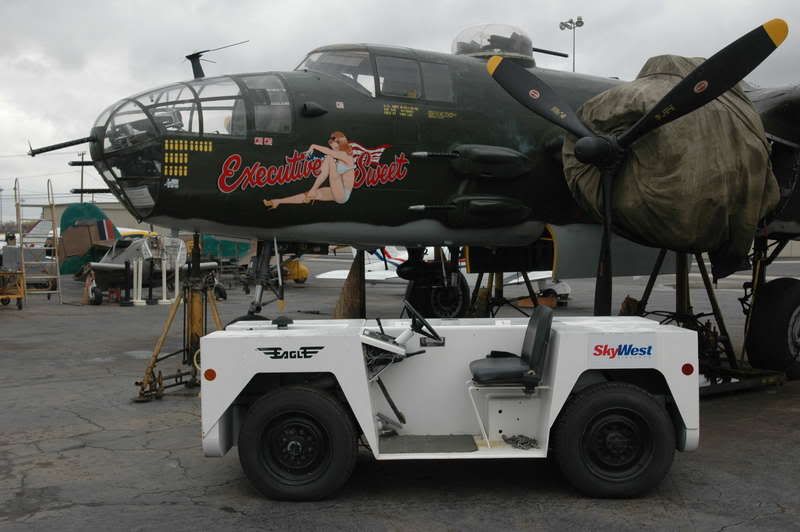
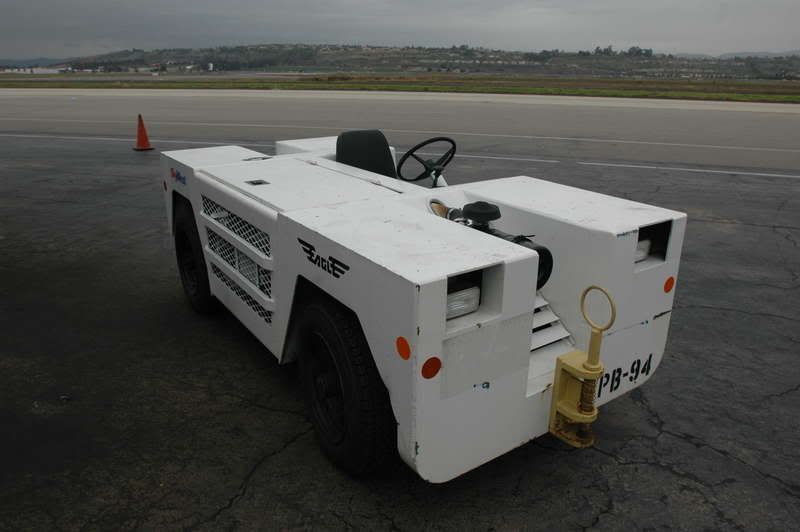
Please Keep the donations coming.
Thank You
Parts needed and for trade are listed on the new pages dedicated to them on the restoration website.
http://www.aluminummistess.org
Today, Skywest Airlines, proudly delivered an Eagle Tow Tug as a donation to our C-47 Restoration. On behalf of the AAF I want to thank all Skywest Coporate Heads, and Employees for this wonderful donation.
Skywest is the second large sponsor we have recieved in recent months. PPG Coatings, as previously mentioned has donated all paint and primer requried for the Restoration.
Attached are Pictures of the Tug next our B-25 "Executive Sweet". Pictures of the tug in front of the C-47 to come later in the week.


Please Keep the donations coming.
Thank You
Parts needed and for trade are listed on the new pages dedicated to them on the restoration website.
http://www.aluminummistess.org
Sun Jan 18, 2009 2:13 am
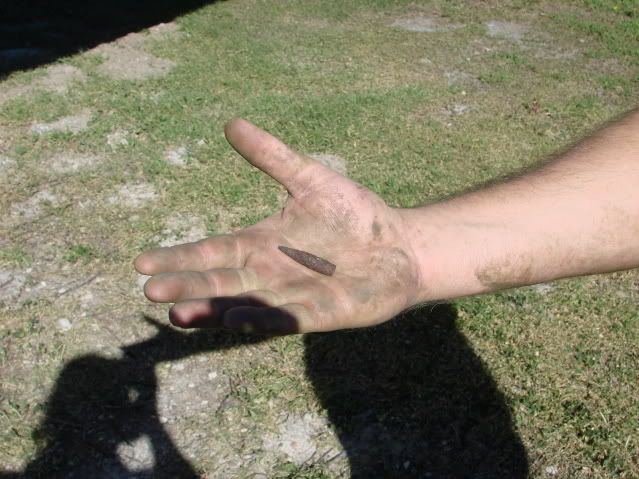
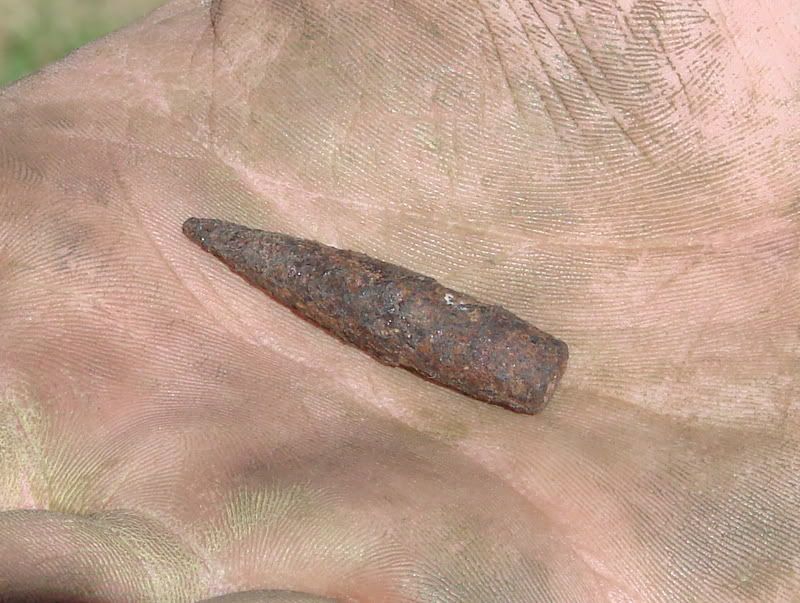
This was found inside the belly of the aircraft today. The blasting of the interior is complete and now we will start priming and painting this coming weekend. The Horizonal Stab has been inspected and all small repairs complied with. Today while some vacuumed out the remnants of the bead, others worked outside drilling out bad rivets and creating patches for needed areas.
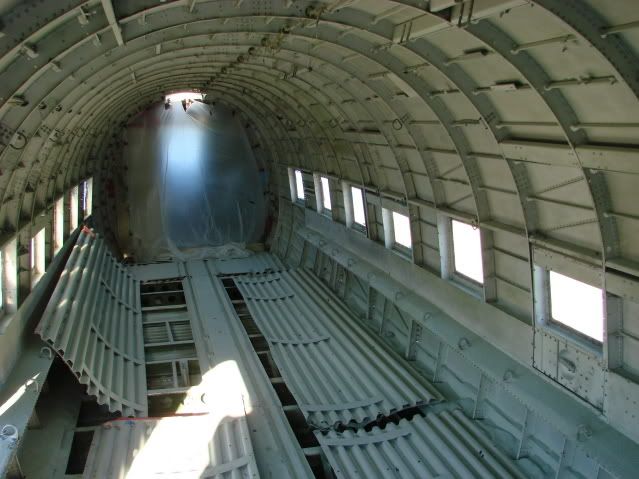
All instruments are out at the shop getting yellow tagged, Carbs are in overhaul, props are prepped to come off for the AD and the engine hoses have all been removed. The instruments and hoses have been donated for overhaul at no charge. PPG Coatings have donated all the paint and primer we can use, Skywest Airlines have donated a Tow Tug to cause, and now American Airlines have donated 4 original DC3 maintenance stands for the program.
We want to thank all our new sponsors and are working on an incentive day after the first flight invite all those who have helped obtain the neccessary items to restore this aircraft.


Sun Jan 18, 2009 9:26 am
Looks like you are making great progress. Very nice to hear about the sponsers too. Congratulations.
Sun Jan 25, 2009 6:52 pm
Volunteers Needed...
Hi there everyone. As the New Year has come and past, our foundation has found most of our 12 volunteers on saturdays assisting without B-25 annual and wing removal / reinstallation. This means I am trying to find additional volunteers to help with our C-47 restoration.
The restoration is moving forward as can be seen on our website restoration progress page. ( http://www.aluminummistess.org ),
but we are need of volunteers who have certain skills. All the flight controls require recovering, so I am looking for experienced fabric indidviduals and sheet metal workers for the numerous patches and skin replacement required.
Please email or PM me for more details, but if you have 1 weekend and would like to join our team, which costs you nothing, please dont hesitate to contact us.
We are also looking for some more donations as the New Year starts. We'd appreciate it and respond with a great thank you even is you donate a dollar.
Thanks again,
Dave Green
Project Manager
Hi there everyone. As the New Year has come and past, our foundation has found most of our 12 volunteers on saturdays assisting without B-25 annual and wing removal / reinstallation. This means I am trying to find additional volunteers to help with our C-47 restoration.
The restoration is moving forward as can be seen on our website restoration progress page. ( http://www.aluminummistess.org ),
but we are need of volunteers who have certain skills. All the flight controls require recovering, so I am looking for experienced fabric indidviduals and sheet metal workers for the numerous patches and skin replacement required.
Please email or PM me for more details, but if you have 1 weekend and would like to join our team, which costs you nothing, please dont hesitate to contact us.
We are also looking for some more donations as the New Year starts. We'd appreciate it and respond with a great thank you even is you donate a dollar.
Thanks again,
Dave Green
Project Manager
Wed Feb 04, 2009 11:44 pm
We purchased our new flight deck windows to be installed this month. Bead blasting completed, so the flight deck stripping and repaint will start taking place.
Tue Feb 10, 2009 2:30 am
American Airlines donates 4 Bil Jax stands to our C-47 and B-25!!!
These stands were designed over 50 years ago for the DC3 and have been in use ever since! See more photos and info on our website to include the donation of paint and primer for the entire aircraft from PPG Military coating division!

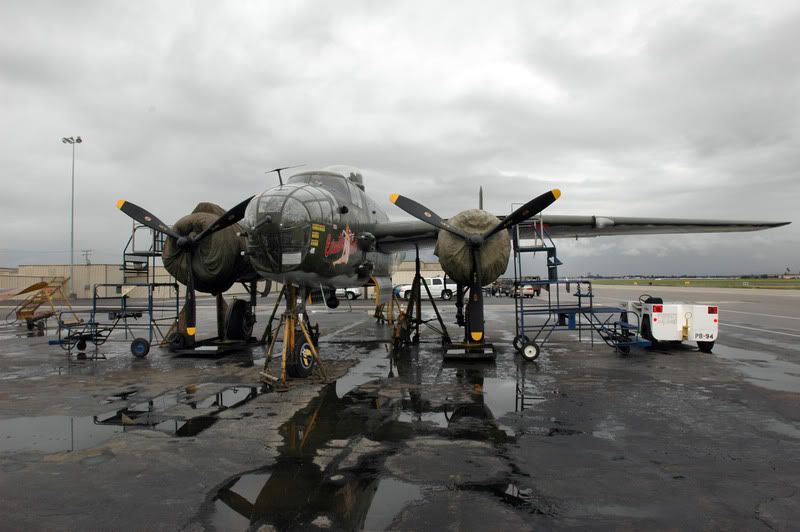
We are still looking for a bead blasting company to help blasting our flight deck for a donation, or donation of labor and we'll get the media. Anyone have a lead?
These stands were designed over 50 years ago for the DC3 and have been in use ever since! See more photos and info on our website to include the donation of paint and primer for the entire aircraft from PPG Military coating division!


We are still looking for a bead blasting company to help blasting our flight deck for a donation, or donation of labor and we'll get the media. Anyone have a lead?
Thu Mar 12, 2009 4:02 am
Hi there everyone. Just wanted to let everyone how were moving along. I have become a new father in the past 3 months, so its been a slow going for me with hands on work, but more with managing the fleet. The C-47 microfilm from the 4th Troop Carrier roup came in and after days of review, I have not seen her tail number in the group. The 3 Company Clerks the unit had duiring the year she was in the war kept detailed notes on tail numbers and people morale. I purchased the microfilm with all documents from the 4th from the AF Historical Agency. SO i have purchased the other 7 TCS sqaudron microfilm rolls to find now which she was in. We are moving along and the aircraft is now stripped of everything that will come off. Some Skin panels need to be replaced and they are in the works.
We replaced about 200 rivets we decided should be and have the bead blasted interior clean to reinspect and start priming. So the rest of the month will be funding the flightdeck to be bead blasted and the finsihing the skin replacement along with another few hundred rivet replacements!
Thats all I have for you all, Ill try to post some recent photos today.
TIll then, you all have a good day!
We replaced about 200 rivets we decided should be and have the bead blasted interior clean to reinspect and start priming. So the rest of the month will be funding the flightdeck to be bead blasted and the finsihing the skin replacement along with another few hundred rivet replacements!
Thats all I have for you all, Ill try to post some recent photos today.
TIll then, you all have a good day!
Many thanks!!
Thu Mar 12, 2009 9:09 am
She is looking amazing!!!!!!!!!!!!!!!!!!
Thu Apr 23, 2009 9:03 pm
Sorry for the long delay in postings. We have busier than a 3 legged dog running a marathon!
We have a Wing attach angle change on our B-25 and the restoration of our 47 at the same time.
We have made great progress and have replaced 3 large skin panels that required it. We have also finished the restoration of the Horizonal Stabilizer and are working on the Vertical Stabilizer and reinstalling it next. Once done the plan is to put the newly wrapped flight controls on and then the tail cone.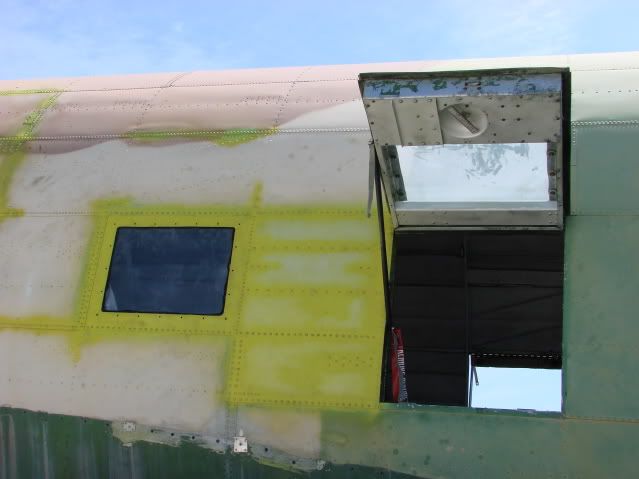
We are looking for donations to bead blast the flightdeck so we can replace the windows and press on with the cockpit overhaul. We have removed the "Modern Military" overhead pilot panel and are looking for an original half moon tubing. http://warbirdinformationexchange.org/phpBB2/viewtopic.php?p=279058&highlight=#279058
We work every Saturday and Most Thursdays. Please feel free to come out and help out if your interested.
Donations are needed.
Thanks for your continuing support!
Dave
We have a Wing attach angle change on our B-25 and the restoration of our 47 at the same time.
We have made great progress and have replaced 3 large skin panels that required it. We have also finished the restoration of the Horizonal Stabilizer and are working on the Vertical Stabilizer and reinstalling it next. Once done the plan is to put the newly wrapped flight controls on and then the tail cone.

We are looking for donations to bead blast the flightdeck so we can replace the windows and press on with the cockpit overhaul. We have removed the "Modern Military" overhead pilot panel and are looking for an original half moon tubing. http://warbirdinformationexchange.org/phpBB2/viewtopic.php?p=279058&highlight=#279058
We work every Saturday and Most Thursdays. Please feel free to come out and help out if your interested.
Donations are needed.
Thanks for your continuing support!
Dave
Wed Jun 24, 2009 8:51 am
any update picks?
How are those donations going?
How are those donations going?
Sun Aug 16, 2009 11:33 pm
Heres pics, from today towards the past. Sorry for the lack of constant updates lately, but foundation has great many things going. We also purchased the complete blueprints set for the C-47 also, so now we have plenty of resources to finish up the restoration. Lots of new skin where needed, and where it could be needed in the future.
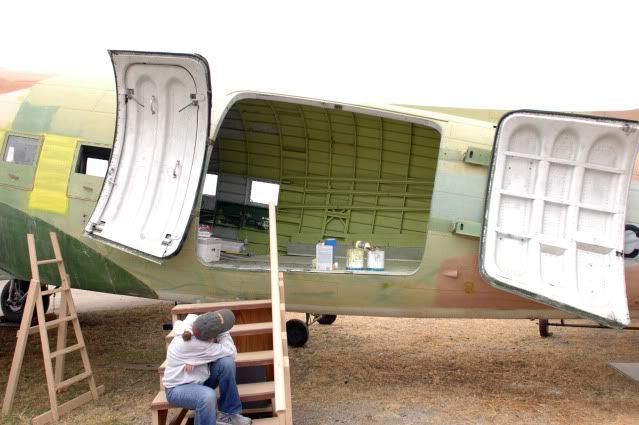


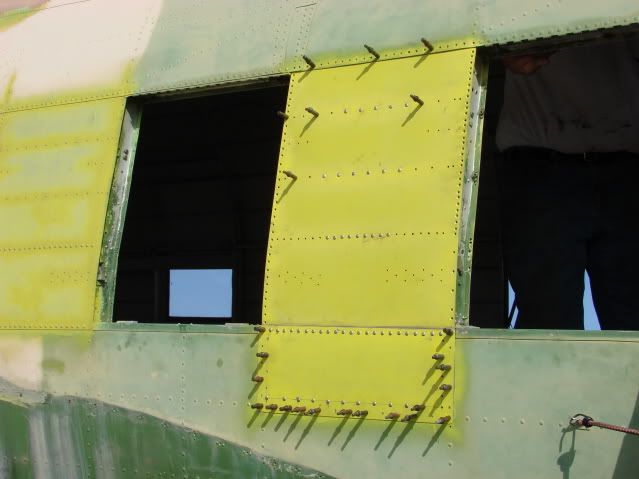

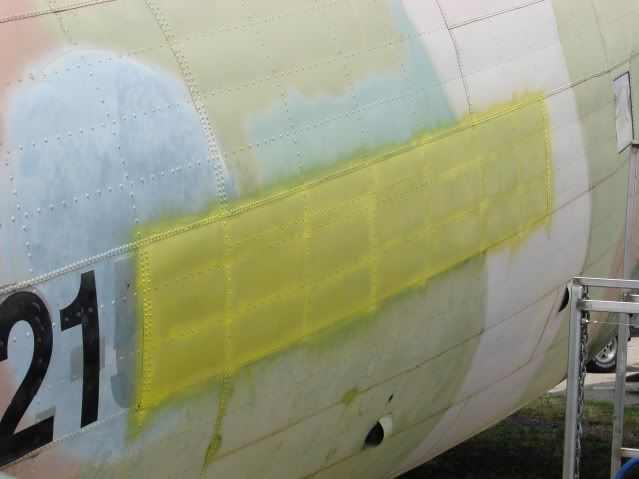
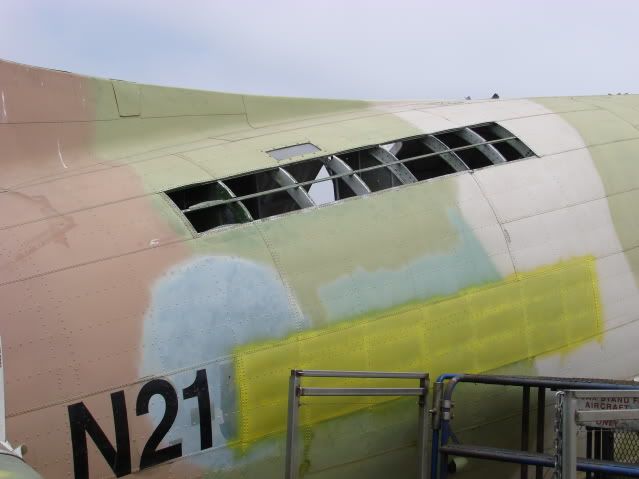
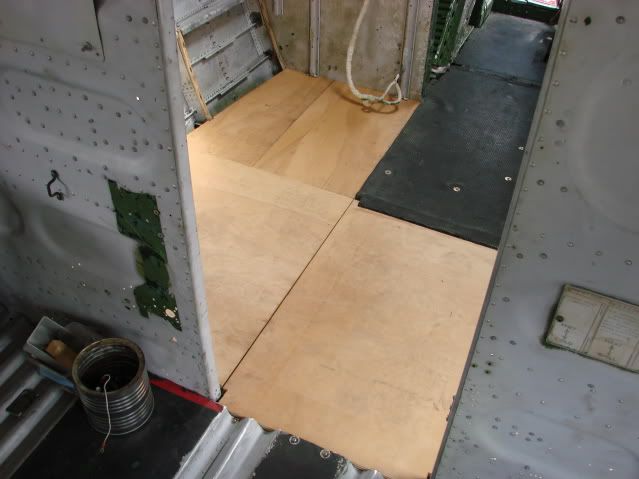










I sure would like to see a C-47 in these colors...Any chance
Mon Aug 31, 2009 9:56 pm

The Jungle Skippers were the squadrons of the 317 th Troop Carrier Group. They were the 39 th , 40 th , 41 st , and 46 th Troop Carrier Squadrons. They served in the South Pacific Theater of operations under the 5 th Air Force commanded by General George Kenny.
They went right to work flying troops and supplies from Australia to Port Moresby , New Guinea . Their baptism of fire came that same month in New Guinea . The Australians were desperately trying to hold on to a vital airstrip at Wau. The Japanese were close to over running the Aussies. The 317 th flew in much needed reinforcements, ammunition and artillery. The Wau airstrip was a difficult airstrip to land on even without a battle going on. The strip was uphill; it rose one foot for every twelve feet. To make matters worse there was a crescent shaped mountain at the end of the runway making a last minute go around impossible.
On the patch of the 317 th Troop Carrier Group are the words “I Gain by Hazard”. Each hazard they faced brought them more experience and expertise. Their crest shows a fist being put to the fire and speaks of their baptism of fire their first month in the Pacific.
From Port Morsby the Jungle Skippers moved to Finchhafen and then to Hollandia , New Guinea as the Japanese were pushed out of New Guinea. General McArthur had his eye on the Philippines and the Jungle Skippers would have a part in his return. They towed gliders and dropped paratroopers at Leyte in the Philippines . It was the 503 rd Parachute Regiment airdropped by the Jungle Skippers that secured Corregidor and led to the opening of Manila Bay.
In August of 1945, after the two atom bombs were dropped on Japan , the Japanese agreed to surrender. When word of this reached Allied Headquarters, arrangements were made to establish a secure communications link with Japan and set up the formal surrender. This surrender would take place in Tokyo Bay on the battleship Missouri in Sept. of 1945, sixty years ago this month. Six C-47 Jungle Skippers from the 41 st Troop Carrier Squadron flew the communications equipment from Okinawa to Japan to establish this communications link to Allied Headquarters. They were the first American aircraft to land in Japan since the war began.
Three Squadrons of the Jungle Skippers are still active today. The 46th was deactivated after the Korean War. The patches of the three remaining squadrons all speak of their experience in the Pacific during WW2.
The 39 th Troop Carrier Squadron, today's 39 th Airlift Squadron, are called the “Trailblazers”. Their patch displays a pioneer's covered wagon. Some of the WW2 airstrips were little more than grass clearings in the jungle or a hastily repaired captured airstrip. The first plane in was said to have pioneered the airstrip, and that pilot would share what he learned about the airstrip with the other flyers.
The 40 th Troop Carrier Squadron, today's 40 th Airlift Squadron, are called the “Screaming Eagles”. Their patch displays a diving eagle carrying a soldier firing a rifle. This goes back to that day at Wau , when those soldiers left their planes firing their weapons.
The 41 st Troop Carrier Squadron, today's 41 st Airlift Squadron, are called the “Black Cats”. Their patch displays a black cat carrying a kitten. Their name comes from the Black Cat Trail in New Guinea which they flew over so many times in support of the forward airfields. That kitten, secure in the black cats mouth, represents a WW2 two year safety record set by the 41 st . From Feb. 1942 until Feb.1944, the 41 st flew many hazardous missions without the loss of a single aircraft, passenger or crewmember. This is a real testimony to the skill of their pilots.
The name of the Jungle Skippers came about from a article written by a newspaper correspondent that was given a lift to the front lines on a 317 th C-47. Forward airstrips were not very visible at altitude and were kept that way to protect them from attack. The 317th pilot was given the map coordinates which would put him in the area, but he would have to fly low, both to be less visible to the enemy and to spot the airstrip. After spotting the strip he would come in at treetop level to spot any obstacles and size up his approach. He would then line up and make his landing. When this particular correspondent wrote his article, he started it by writing “I caught a hop on one of the jungle skipping airplanes of the 317 th Troop Carrier Group.” A copy of that article somehow reached Col. John Lackey the commander of the 317 th. He liked the term and soon the name “Jungle Skipper” began appearing on the fuselage of 317 th squadron aircraft. The Jungle Skippers kept the troops supplied with all that was needed from bombs to toothbrushes. They earned a reputation for getting the job done.
Over the years since WW2, the Troop Carrier Squadrons became Airlift Squadrons, their aircraft have changed and their locations have changed but their reputation for getting the job done has not. The 317th Airlift Group is at Dyess AFB Texas next to Abilene. The 39th and 40th are still deployed to Iraq and have been for the last 2000 days. The longest continuous deployment of an active duty unit in the Air Force today.